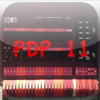Retro Replay Review
Gameplay
Zork is a pioneer in text-adventure gameplay that challenges players to explore a sprawling subterranean world using only typed commands. You’ll navigate through dark tunnels, manage your limited lantern fuel, and manipulate objects in inventive ways. The parser understands a wide array of inputs, rewarding experimentation with creative solutions and unexpected turnarounds.
The core mechanics revolve around exploration and lateral thinking. As you delve deeper into the Great Underground Empire, you’ll collect treasures of immense zorkmid value and stash them safely in your trophy case. Puzzles range from straightforward key-and-door conundrums to whimsical obstacles that demand outside-the-box reasoning—think feeding a troll or negotiating with a mischievous thief.
It’s important to note that Zork’s challenge is self-paced and non-linear. There’s no combat system or time limit beyond your lantern’s battery life, so you can take as long as you like to map rooms, revisit areas, and test theories. This leisurely approach makes each triumph feel well earned, whether you’ve just unlocked a hidden passage or outwitted the notorious Grue.
Graphics
Strictly speaking, Zork has no graphics in the traditional sense—every scene unfolds in rich textual description. Rather than rendering images, the game paints pictures with words, evoking claustrophobic caverns, glittering treasure hoards, and quirky denizens of the underground. Your imagination becomes the graphics engine, filling in every detail from flickering torchlight to the echo of dripping water.
This reliance on prose allows for a level of detail and atmosphere that rivaled, and in many ways surpassed, early graphic titles. The writing is crisp, often humorous, and brimming with personality. Whether you’re reading about a muddy troll, a dimly lit forge, or a secret panel in an ancient wall, the text conjures vivid mental images that linger long after you’ve turned off the game.
Ported to numerous platforms—from VMS to the Acorn Archimedes and modern interpreters like Z-code and TADS—Zork’s text-only presentation remains consistent. No matter your system, you receive the same lush descriptions and dynamic storytelling. In an era dominated by pixel bounds and hardware limitations, Zork demonstrated that imagination could be the richest form of graphics available.
Story
Zork’s narrative centers on the legend of the Great Underground Empire, a long-lost civilization filled with hidden secrets and unimaginable wealth. You play as an intrepid treasure hunter, guided only by cryptic clues and the hope of returning aboveground with your pockets full of zorkmids. Each new area reveals fragments of the Empire’s bygone glory—and a fresh set of challenges.
Though there is no defined protagonist arc or cinematic cutscenes, the emergent storytelling is compelling. Encounters with strange creatures, magical barriers, and ancient relics weave a tapestry of discovery. The game’s sense of place is reinforced by witty descriptions—one moment you might be admiring a gleaming crown, the next dodging a malevolent thief or deciphering runes on a cavern wall.
What truly distinguishes Zork is its tone: part serious exploration, part tongue-in-cheek humor. References to “Flatheadian ruins” and sly nods to player assumptions keep the experience lighthearted. The story unfolds at your own pace, inviting you to fill in gaps, question the Empire’s fate, and piece together a narrative that’s as much your creation as the developer’s.
Overall Experience
Playing Zork today feels like stepping back into the infancy of interactive fiction. Its emphasis on text, puzzles, and freeform exploration offers a distinctive pace compared to modern action-heavy titles. If you relish methodically unraveling mysteries with pen and paper at your side, Zork remains one of the genre’s crowning achievements.
The learning curve can be steep for newcomers unused to command-line interfaces, but perseverance pays off. Each solved puzzle brings a rush of satisfaction, and the genuine thrill of uncovering a new vault or secret room is unmatched. The game’s generous design—allowing multi-word commands and intelligent error messages—eases players into its complex world.
Above all, Zork is a testament to creative collaboration at MIT in the late ’70s, laying the groundwork for Infocom’s future masterpieces. Its enduring charm lies in the freedom it affords: to explore, experiment, and imagine. For anyone curious about gaming history or eager for a cerebral adventure, Zork is a must-play classic that still feels fresh and rewarding decades after its inception.
 Retro Replay Retro Replay gaming reviews, news, emulation, geek stuff and more!
Retro Replay Retro Replay gaming reviews, news, emulation, geek stuff and more!









Reviews
There are no reviews yet.